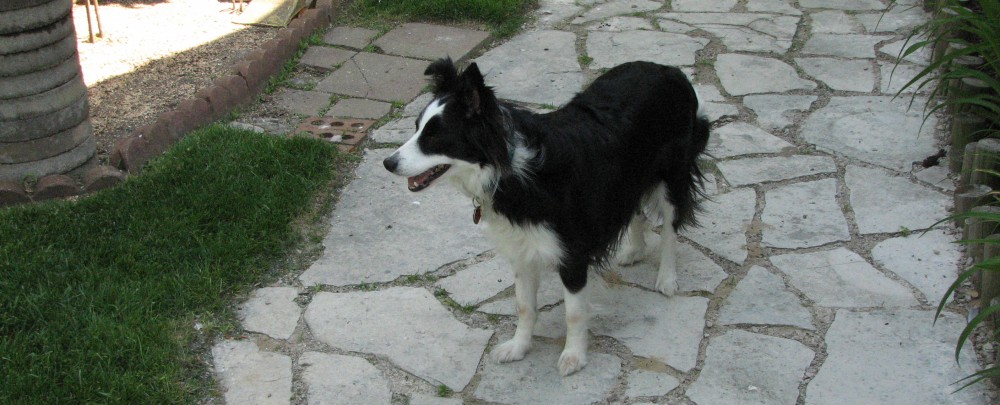I’m going to try to clear up some possible confusions that may have arisen to date, especially from the discussions arising in part five. I want to make clear the conceptual tack I’m taking in addressing the issue of removing the long term, non-climatic trend(s) imparted by the tree.
The first point should be obvious: any such trends are by definition “noise”, not signal, and therefore we want to remove them so that the environmental signal alone remains. The next point however is not so obvious, and indeed, not even clear in the tree ring literature. This is, that we can usefully distinguish at least two different types of non-climatic trend when ring widths are the response variable: the purely geometric, and the truly biological. The purely geometric is simple: as a tree grows in diameter, there must be a geometric component to the long term trend, since a larger diameter tree has to distribute a given quantity of wood around a larger circumference than does a smaller tree. This in turn means rings must unavoidably become narrower further from the pith, all else equal. The confusion arises when it is mistakenly assumed, as it often is, that this geometric trend represents the entire non-climatic trend induced by the tree: it doesn’t, at least not necessarily. This is because the tree might also be “deciding” to alter the total amount of wood it produces in any given year as it changes age/size, either because the total pool of available organic carbon compounds (“photosynthate”), and/or the allocation thereof to different tree processes and/or structures, changes over time. This is fundamental plant biology, nothing earthshaking.
The geometric trend is pure nuisance, to be removed, and the simplest way is to just use ring area as the response variable. Well that was easy! Yes, but any truly biological, long term trend still (potentially) remains, and it too can readily be confounded with long term climatic trends. Unlike the geometric trend, there is no simple method for its removal, because it will vary in ways that are instance-specific (i.e. species, population, site factors especially). The RCS method attempts to remove the combined geometric/biological trends; if the geometric trends are first removed (which they are not: see further down), then its “regional curve” might give an approximation of the biological trend. But untested approximations are exactly that, and right here lies the real power of simulation analysis: we can instead grow trees without any biological (or geometric) trends, systematically alter several other potentially influential variables at the same time, and then observe how RCS performs w.r.t. climatic trend recovery. This includes testing whether it in fact ever performs acceptably well under any conditions, including the most optimal. By forcing those other factors to have zero effect, we create an optimal or “best case” state and thereby evaluate the method’s limits to accuracy. This is a very powerful way to proceed.
Such other conditions include: (1) the age structure of the trees sampled, (2) the magnitude of inherent variation in growth rates between trees, (3) the nature of the climate trend (e.g. linear vs not), (4) the effect of tree size on ring response for a given climate state, (5) the effect of climate state on ring response for a given tree size, and (6) various possible interactions between these things. There are also variables in the algorithm to explore, including specific parameters of the RCS method, and how the standardization of the chronologies and climate variable is done.
Relative to the discussion in part five of this series, if I impose a linear effect of climate on ring area, this is simply a test of one possible relationship: a starting point, albeit a very reasonable one. It’s not a statement that all trees (or even any trees) actually respond that way, and indeed, there is good evidence that many trees don’t respond that way–they often also have a biological trend to them, expressed by growing fastest after a few decades, for a few decades, followed by a slow decline over a long time. These are often in optimal and well controlled forestry conditions however; what biological trend the many different subalpine species typically used for temperature estimation will have is less certain. There is far less well controlled information on such trees, and hence the reliance on procedures like RCS. Regardless, the main point here is that I can test (and have) many other possible (and reasonable) relationships, including various nonlinear effects of tree size, non-linear effects of climate on rings of a given tree size, and the interaction between the two. I can then evaluate how well RCS performs across that suite of conditions.
The question was raised there: what if instead of ring areas, ring widths are what actually respond linearly to climate. Assuming that the geometric effect on width has been removed, as it should be, this is identical to testing a relationship between climate and ring area, because they will then be simple linear functions of each other. Alternately however, if the geometric effect on ring widths hasn’t first been accounted for and removed, then the RCS method has the very definite potential at least for conflating that effect with the climatic, thereby producing an inaccurate climate trend estimate. Unfortunately, this is exactly what is done in standard practice, which in turn is exactly why I addressed it first. The first order of business is to demonstrate any problems that common practices might introduce, before examining what various alternatives to them might produce.
At the same time, this fact does not guarantee that even if you do account for the geometric trend in ring widths, that RCS will then produce reliable climate trend estimates, especially when you start departing from optimal conditions, but even if you don’t. I just haven’t gotten to that yet.
But I will.

I’m finding this series quite interesting. Easily read and followed. Looking for more . . .
Very glad to hear it, thanks.